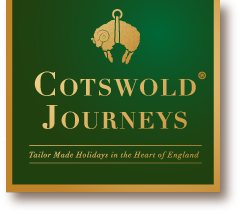A Roman fort was established at Corinium, in the territory of the Dobunni tribe, about a year after the Roman conquest of Britain in 43 AD. When the fort became of less strategic value after about 70 AD, the town continued to flourish. Over the next twenty years, a street grid was laid out and the town enlarged, to include two marketplaces and an amphitheater. Development continued until the 4th century. A large forum and basilica was built over the site of the fort and when a wall was erected around the Roman city in the late second century, it enclosed 240 acres (1 km²), making Corinium, in area, the second-largest city in Britain. It became the seat of the province of Britannia Prima in the fourth century. Three main Roman roads met in Corinium: the Fosse Way, Akeman Street and Ermin Street. It is thought that the town was the center of both a stone carving industry and a mosaic industry with two schools of art, based on images of the saltire and Orpheus. The town walls were still being repaired early in the 5th century and the forum continued to be swept clean until finally abandoned, perhaps around AD 430. Its medieval existence included a long struggle to attain borough status, which would have brought certain freedoms and privileges. Instead, the town was very much under the thumb of the abbot of the monastery until its dissolution, after which the abbey title reverted to the King, who handed it over to another lord of the manor. In fact, Cirencester did not acquire much in the way of self-governance until 1894, when it became an Urban District Council.
Sheep rearing, wool sales, weaving, and woollen broadcloth and cloth-making were the main strengths of England’s trade in the Middle Ages, and not only the abbey but many of Cirencester’s merchants and clothiers grew rich on it. The tombs of these merchants can be seen in the parish church, while their houses still stand line Coxwell Street and Dollar Street.


0 Comments